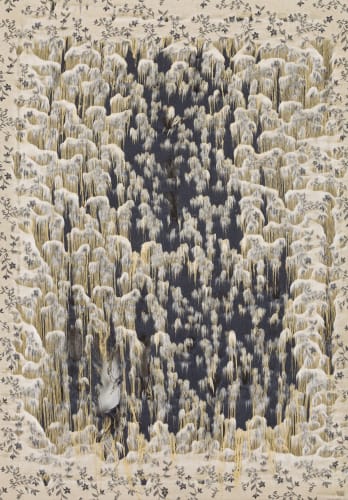Vittorio Bianchi acts within the spatial dimension of the surface of the fabric, his privileged artistic medium. The artist goes beyond its limits through a gestural scraping action that attacks the material, in a way that upsets its structure without betraying it: not an act of rupture, in fact, but of revelation, aimed at supporting the urgency of the underlying layer to break onto the surface from the depth that holds back it.
Vittorio Bianchi acts within the spatial dimension of the surface of the fabric, his privileged artistic medium. The artist goes beyond its limits through a gestural scraping action that attacks the material, in a way that upsets its structure without betraying it: not an act of rupture, in fact, but of revelation, aimed at supporting the urgency of the underlying layer to break onto the surface from the depth that holds back it.
He investigates the sleeping spaces of memory that flow inside the fibers, reviving them in the relief of a breath that regains possession of its legitimate interlude. His is a deaf gesture in which the phrasing woven into the voiceless history of the material echoes. The surface becomes sensitive skin, caressed by the revealing vehemence of the action that exposes its filaments, as if they were the rib of the anatomy of the eternal flow of history.
In doing so, he restores a truce in the opposition between tradition and innovation, a calm that invites a delicate reconciliation in the relationship of interdependence between the persistence of a collective cultural identity and the one of the warp that generated it.
He investigates the sleeping spaces of memory that flow inside the fibers, reviving them in the relief of a breath that regains possession of its legitimate interlude. His is a deaf gesture in which the phrasing woven into the voiceless history of the material echoes. The surface becomes sensitive skin, caressed by the revealing vehemence of the action that exposes its filaments, as if they were the rib of the anatomy of the eternal flow of history.
In doing so, he restores a truce in the opposition between tradition and innovation, a calm that invites a delicate reconciliation in the relationship of interdependence between the persistence of a collective cultural identity and the one of the warp that generated it.

